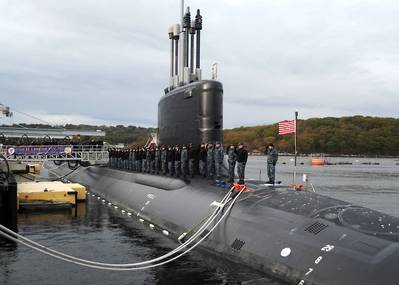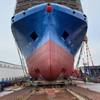US Navy to Commission Submarine Illinois
The U.S. Navy is set to commission its newest fast attack submarine during an October 29 ceremony at Naval Submarine Base New London in Groton, Conn.
The third Virginia-class block III submarine and 13th of the Virginia-class fast attack class, the future USS Illinois (SSN 786) has the capability to attack targets ashore with highly accurate Tomahawk cruise missiles and conduct covert long-term surveillance of land areas, littoral waters or other sea-based forces. Other missions include antisubmarine and antiship warfare, mine delivery and minefield mapping. It is also designed for special forces delivery and support.
Virginia-class submarines are 7,800 tons and 377 feet in length, have a beam of 34 feet and can operate at more than 25 knots submerged. They are built with a reactor plant that will not require refueling during the planned life of the ship-reducing lifecycle costs while increasing underway time.
"USS Illinois is one of the most technologically advanced platforms in the world," said the Honorable Ray Mabus, secretary of the Navy. "This submarine represents not only the Navy's lasting connection to the state of Illinois but also the American innovation and manufacturing skill that have given us such a powerful advantage, making us the most powerful expeditionary fighting force the world has ever known."
Adm. John Richardson, chief of naval operations, will deliver the ceremony's principal address. First Lady Michelle Obama is serving as the ship's sponsor, and will give the order to "man our ship and bring her to life."
The new submarine is the second U.S. Navy ship to be commissioned with the name Illinois. The previous Illinois (BB 7), a battleship, was built at Newport News Shipbuilding and Dry Dock Company, laid down in 1897 and was the lead ship of a class of three 11,565-ton battleships. In December 1907, Illinois steamed out of Hampton Roads, Va., to begin a voyage with the Great White Fleet. In January 1941, she was renamed Prairie State (IX-15) and served through World War II as a midshipmen's training school.











